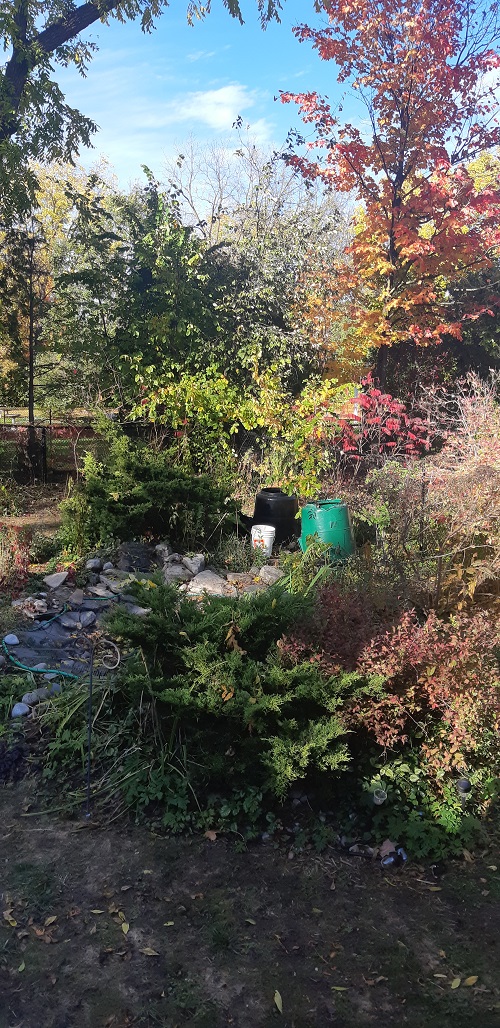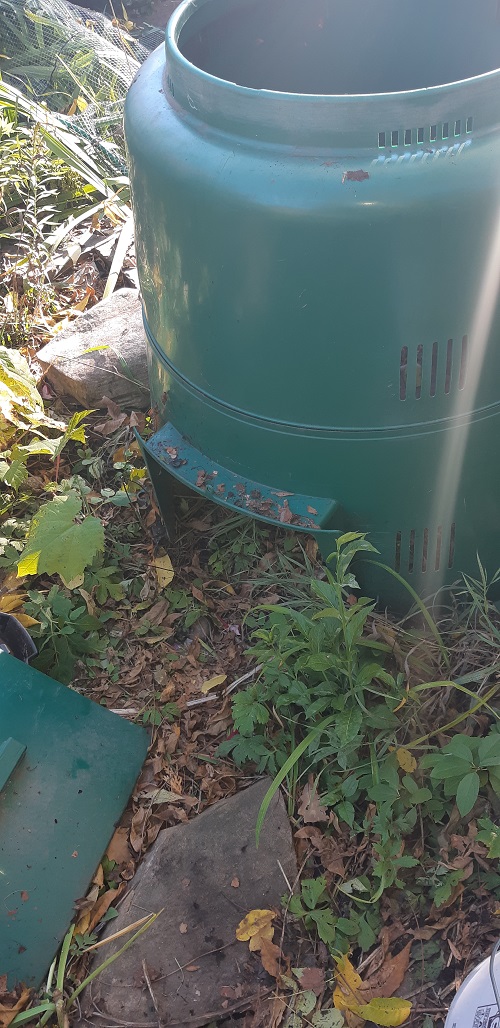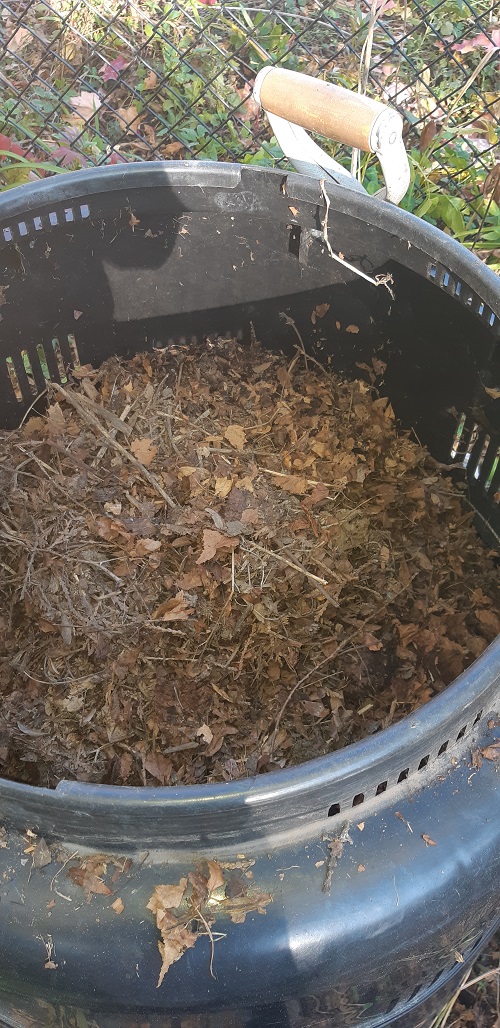Article and photos by Dinah Gibbs, a member of the Richmond Hill Garden & Horticultural Society
To turn garden waste into compost, four things are needed: warmth, oxygen, moisture and "food". Bacteria naturally present in the environment will do the breaking down necessary to give you a rich soil-like compost to improve soil and fertilize your plants. Bacteria will consume nutrients present in your unwanted yard waste greenery, turning it into plant fertilizer. When all of these conditions are not present (ex. too cold!) the decomposition process will pause temporarily until the conditions allow bacteria to become active once more.
In my yard I have 2 compost bins, there is a reason for this. They are in a fairly sunny location. In the afternoon they receive a couple of hours sun. Mine came from the City of Richmond Hill for a small cost. (Look for their Healthy Yards event in the April/May timeframe.) Or you can make your own containers from materials you have on hand.

To fill the bin, weeds, grasses and fallen leaves are all good. Food waste is a bad idea as it attracts rodents. The smaller the plant material is, the quicker it will turn into compost. The fastest and easiest way to cut it up is to run over it with a lawn mower. If you have one that catches the mulch (cut up bits), perfect! If not, you can rake it into piles and throw it into the bins. The first usage of the bins will take a while to begin the fermentation process. To kick start the bacterial action, add either a shovelful of old compost or some farmyard manure. (I don't tell my neighbours about the horse manure I sneak home!)

Generally, I totally empty bins in the fall as the next batch of leaves become available. The most decomposed material is at the bottom of the bins. My bins have a door at the bottom to access it which I do over the summer months. However, it is a tedious process. In the autumn, I scoop any unrotten material off the top and lift the bin to reveal a nice neat pile of rich compost. That compost is spread around the yard and lightly dug in. I do the same with the second bin. I then divide the plant material that is not yet totally decomposed between the 2 bins and put my new chopped up leaves and weeds on top. Now they are ready to start decomposing again.

Try to resist the temptation to squash your compost down too tightly as this will reduce the available oxygen. Stirring the bin’s contents from time to time will help speed things up by introducing oxygen while evenly distributing moisture. As long as the temperature is above zero it is worthwhile to stir it. You will be surprised how warm the centre of your compost can be, even in cold weather. Bacterial action creates heat. Compost needs to be moist, but neither waterlogged or bone dry. Having two bins is helpful. If one becomes waterlogged you can transfer dry material to the other bin, stir it up and away you go.

Composting is both an art and a science - just like gardening. There are many benefits such as: helping the environment by reducing the need to transport and dispose of yard waste, improving soil texture, making soil easier to work, and providing valuable plant nutrients. Start now by raking your leaves to the location in your yard where you’ll put your compost bin in next spring.

